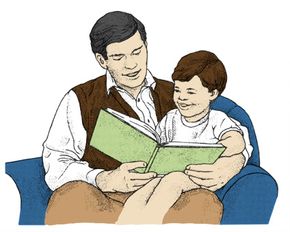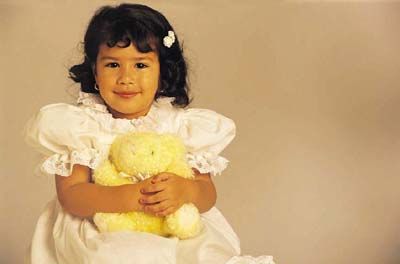Parents want to provide the best for their children. But there will always be a debate about what's best -- which toys are the most desirable, what books are the most educational, which television programs are appropriate. Although you can find dozens of expert opinions, ultimately the choice is yours. In this article, we will look at ways for stimulating a child's mind and promoting his or her development with toys, books, music, games, and more. Here's a glimpse:
- Choosing the Right Toys for Babies Many toys available today promise to bolster child development, enhance intelligence and promote learning. But which claims are true and which are exaggerated? In this section, we take a close look at the role toys play in a child's development. We evaluate the cost of a toy versus its effectiveness and recommend alternatives to high-priced fad toys. You'll also find a list of household items which make excellent toys that will entertain a child for hours. Finally, we focus on the specific needs of babies (up to 12 months old), and which types of toys are likely to be the most beneficial -- and fun.
- Choosing the Right Toys for Toddlers By age one, your child's hand-eye coordination has improved considerably. Consequently, more challenging, interactive toys will be more appealing. In two categories (12-24 months and 24-36 months), we list the most age-appropriate toys for toddlers. For instance, in the 12-24-month section, you'll read about blocks, sorting toys, shape-recognition toys, riding toys, push-pull toys, pounding toys and dolls. For the two- to three-year-old, toys that allow adult imitation are favorites. You'll learn about different types of talking toys, trucks, trains, kitchen equipment, realistic tools, puzzles, play scenes, and quiet-time toys.
- Reading to a Child There are so many positive effects reading can confer that the only question is when to begin. We provide helpful suggestions on implementing storytime in your child's routine in this section. You'll find a discussion of the types of books most appropriate to various age groups as well as the kind reaction and interaction you can expect from your child from infancy onward. We also talk about investigating your local library, which may offer story hours in addition to a selection of children's books.
- Encouraging Creativity in Children Creativity is an essential problem-solving tool, allowing the ability to "think outside the box," and enabling new solutions to be imagined. This page deals with nurturing creativity in its many forms, including coloring, painting, playing house and having tea with an imaginary friend. Find suggestions on triggering your child's imagination and encouraging new ideas. Read about art projects, too -- and low-cost alternatives to art supplies like paper, paint and clay. We discuss make-believe games and how you can contribute ideas and props to your child's play. And finally, we talk about imaginary friends and their role in your child's life.
- Music and Television for Children It is believed that a fetus can hear music from the womb and may even recognize songs he heard in utero after he emerges. In this section, learn about the benefits of early exposure to music. Plus, read about the different types of music your child may enjoy, from classical to folk to world music, and where to look for each. In the second half of this section, television for children is addressed. You'll find a discussion of the negative aspects of TV, advertising and voilence, and how to avoid them. And you'll read suggestions on incorporating television as a valuable educational and entertainment resource.
- Exploring Nature With Children You could spend years in your backyard and never notice all the flora and fauna teeming there, so just imagine how many opportunities for exploration your child will find in the great outdoors. Read tips on nature walks, like what to bring and how to make it fun. Learn about the highlights the four seasons offer: water and sand in the summer, snow and ice in the winter. We provide instructions on planting seeds so that you and your child can watch the growing process together. And you'll also find some tips on introducing your child to wildlife.
- Gifted Children Children who display a particular ability to concentrate or memorize, or who begin reading by age 3 or 4, may be gifted. Other characteristics like a particular ability to draw or an interest in and talent for music, drama and dance, could indicate the child is exceptional. This section outlines some of the signs to look for to determine whether a child is gifted and talented. There is detailed information on having a child's talents assessed by a professional. And finally, read about maintaining a balance between providing enough stimulation and pushing your child too much.
- Children's Learning Programs and Preschool There is no definitive research on the benefits of academic learning before school age, but parents often want to teach their children skills like math, reading and foreign languages. In this section, read experts' opinions on imaginative play and academic readiness. Find suggestions on enhancing your child's thinking skills with simple, informal exercises and questions. You will learn what benefits attending preschool may provide -- like socialization -- and why some parents decide against it. Finally, read guidelines on choosing a preschool that will meet your child's specific needs.
Advertisement



